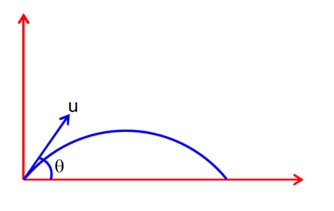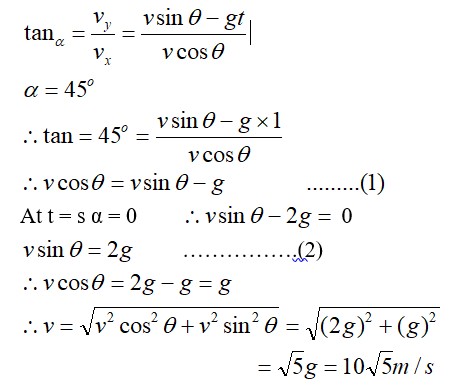Given below are two statements. One is labeled as Assertion A and the other is labeled as Reason R.
Assertion A: Two identical balls A and B thrown with same velocity ‘u’ at two different angles with horizontal attained the same range R. If A and B reached the maximum height h1 and h2 respectively, then
Reason R : Product of said heights.
Given below are two statements. One is labeled as Assertion A and the other is labeled as Reason R.
Assertion A: Two identical balls A and B thrown with same velocity ‘u’ at two different angles with horizontal attained the same range R. If A and B reached the maximum height h1 and h2 respectively, then
Reason R : Product of said heights.
Option 1 -
Both A and R are true and R is the correct explanation of A.
Option 2 -
Bothe A and R are true but R is NOT the correct explanation of A.
Option 3 -
A is true but R is false.
Option 4 -
A is false but R is true.
-
1 Answer
-
Correct Option - 1
Detailed Solution:First angle, 1 =
Another angle (2 = 90 - ) for which range will be
Same as that of 1 =
at
So, Both statement is true & Reason is correct explanation for statement 1.
Similar Questions for you
Please find the solution below:
after 10 kicks,
v? = 3tî v? = 24cos 60°î + 24sin 60°? = 12î + 12√3?
v? = v? – v? = (12 – 3t)î + 12√3?
It is minimum when 12 - 3t = 0 ⇒ t = 4sec
ω = θ² + 2θ
α = (ωdω)/dθ = (θ² + 2θ) (2θ + 2)
At θ = 1rad.
ω = 3rad/s and α = 12rad/s²
a? = αR = 12 m/s² a? = ω²R = 9 m/s² A? = √ (a? ² + a? ²) = 15 m/s²
a? = v? ²/4r
a_A? = (v? ²/r²) × r = v? ²/r
a_A = 3v? ²/4r
Taking an Exam? Selecting a College?
Get authentic answers from experts, students and alumni that you won't find anywhere else
Sign Up on ShikshaOn Shiksha, get access to
- 65k Colleges
- 1.2k Exams
- 679k Reviews
- 1800k Answers



